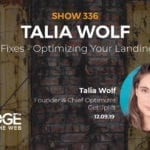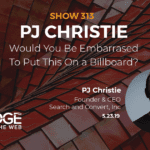The power of link building has been touted by SEO experts for years. Links are essential in order to build website authority. The team at Site Strategics follows strict “White Hat SEO” tactics that include expert keyword analysis, site structure optimization, INTERNAL AND EXTERNAL LINK BUILDING, and optimized content creation. We only use approved tactics and services when we map out a strategy to increase organic traffic.
According to David Farkas in his article “SEO 101: The First 7 Links You Should Build in 2016”:
Your links still need to be relevant and they still need to come from human-curated sites. They have to make sense from a user’s perspective. Most importantly, your content and outreach needs to be top-notch.
Link building isn’t a hard thing to do, but it does take time: Time to develop a strategy and time to implement that strategy.
Seven suggestions Farkas offers up to those endeavoring in link building include: local-focused content; industry-focused content; neighborhood-focused content; interviews; Help a Reporter Out (HARO); reviews; and customer spotlights.
“If you focus on high quality, useful content and forging local connections, you’ll be off to a great start,” says Farkas.
Another article we touched upon during #edgetalk was Fat Joe’s article, 15 Actionable Link Building Tips We’ve Learnt from Our Clients. He offered a series of 15 tips to improve your marketing efforts with link building.
Tip 1 – Link to content assets and blog posts. We’ve often encouraged our clients to create blogs because it’s content we can repurpose and link to in social media outreach.
Tip 2 – Create meaningful campaigns and link build around those. Fat Joe suggests instead of link building for its own sake, some agencies can built a content asset such as a tool or infographic and create a link building campaign around it.
Tip 3 – Vary the quantity of links you build every month. This encourages link builders to avoid patterns while keeping things looking natural and fresh.
Tip 4 – Vary your anchor text.
Tip 5 – Use brand anchors 80-90% of the time.
Tip 6 – Use anchor texts that make sense. Fat Joe claims the smartest agencies know brand anchors are the most used anchors in the ‘natural’ world, so they emulate that with their link building efforts.
Tip 7 – Vary your link types. The types of outreach platforms you use to build links must be varied, including blogger outreach, PR & Infographic outreach, and directories.
Tip 8 – Ensure your links look unsolicited, and ‘earned.’
Tip 9 – Take advantage of seasonal trends.
Tip 10 – Vary the length of content where you link appears. Fat Joe says securing links in content placements that are all 500 words is going to create that unnatural pattern you want to avoid.
Tip 11 – Don’t always chase link metrics.
Tip 12 – Bring social media links into the mix. Social media and SEO strategies are interconnected in terms of their ultimate effect. Millions of links are created and shared on social media every day.
Tip 13 – Be realistic about link volumes.
Tip 14 – Build links to your links.
Tip 15 – Create and build links using infographics. According to Fat Joe, a secondary benefit for creating and distributing infographics is that once you do some outreach and get some mentions, infographics are generally more likely to get shared and republished on other blogs with natural credit mentions back.
Link building is here to stay. Inbound linking plays a significant role in the success of the search engine optimization of a website. As a vote of approval toward your website, a link back to your site can help it rise in search engine rankings for particular relevant keywords. Social media and SEO strategies are now interconnected in terms of their ultimate effect.


